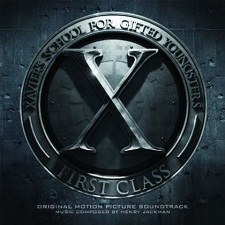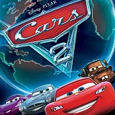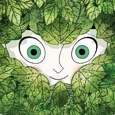 Henry Jackman studied classical music in the UK at St. Paul’s Cathedral Choir School, Eton College and Oxford University. An avid interest in technology and contemporary culture meant his formal education was mixed with the urban beats of club music and the innovative production of Electronica.
Henry Jackman studied classical music in the UK at St. Paul’s Cathedral Choir School, Eton College and Oxford University. An avid interest in technology and contemporary culture meant his formal education was mixed with the urban beats of club music and the innovative production of Electronica.
With a successful and eclectic career in both record and film industries, Henry’s musical work has ranged from the chart topping to the esoteric, and from summer blockbusters to art house projects. He combines a unique range of skills, which include classical composition, orchestral arrangement, beat programming, sound design, production and mixing.
Recently, Henry has made a startling and successful transition to movie scoring. At the start of 2006, he caught the attentions of Oscar-winning Hans Zimmer, one of the most successful film composers of the time. This fruitful association has lead to significant credits and contributions on several top-ranking films produced in recent years: The Da Vinci Code, Pirates of the Caribbean 2, The Holiday, Pirates of the Caribbean 3 and The Simpsons Movie.
Working on film productions at this level has brought Henry into association with Hollywood’s most distinguished and talented professionals – award winning producers and directors. Henry’s unique orchestral compositions have been performed and recorded by musicians both from the London Symphony Orchestra and the Los Angeles Philharmonic Orchestra, and his ability to work alongside leading orchestral players and conductors is a vital part of his work.
His genius lies in his ability to deal with so many different styles of music and universes. A versatility on evidence in his latest compositions for the movies: the exquisite Winnie the Pooh and the bombastic X-Men: First Class.
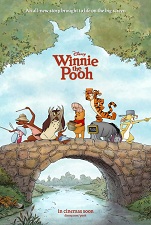
Animated Views: How did the composer of X-Men: First Class and Monsters Vs. Aliens come to write the score of Disney’s Winnie the Pooh?
Henry Jackman: I met up with Tom McDougall and Chris Montan who is a very distinguished producer at Disney. They expressed an interest and invited me to come down to Disney at a very early stage just to sort of look at what they had done at the moment on the movie and see what I thought about it. The reason I was excited is because Winnie the Pooh is one of those every-present phenomenons. When you think about it, we haven’t seen him for a while, but you feel that Winnie the Pooh has always been there. It’s such a universal character.
That said, my first fear was, maybe they’d try to inappropriately contemporize Winnie the Pooh and now he was gonna have an iPod and he was gonna use colloquial language. That’s the kind of idea that someone might think is a good idea to freshen up Winnie the Pooh. Well, nothing can be further from the truth. The minute I saw what these guys were doing, it was so clear to me that they were making fresh something that was magical, that we know everyone loves, and it was really respectful to the Hundred-Acre Wood. It kind of reminded me of having some toy that you were very fond of when you were a child, and then you go on eBay or something and you actually manage to find some of these nostalgic things and you find it in very good, or even better condition!
So, I was very excited when I saw some footage and when they showed me some backdrop paintings. They’re like works of art. It’s amazing. When you see them up close, you realize the level of artistry, and why everyone loves Winnie the Pooh so much. Because there’s so much love that’s gone into it.
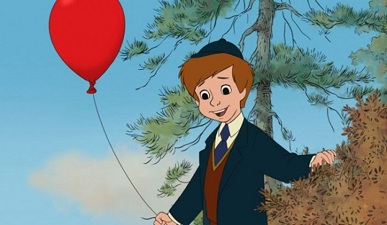
AV: From then on, how did you imagine the right music to fit that level of artistry?
HJ: It became very clear straight away that any sort of musical involvement was not gonna be a crazy reinterpretation, but like the directors had achieved, it would be respectful of the original flavor of Winnie the Pooh. The other thing I got excited about was, you know, the great thing about being a film composer is working on such a variety of movies like X-Men and so on. But Winnie the Pooh offers you something special. The mission is to preserve some of the original feel. That’s a very different proposition. Listen to the original score, it’s a magical combination. It’s 50% Hollywood with a little nod or tribute to Gershwin and so on through light music arrangements, and on the other hand, it’s got sort of historical references to Dukas’ Sorcerer’s Apprentice and Kurt Weill. It has a sort of musical DNA that you might call elevated concert music, but the lighter kinds, like Dukas, unlike some live action movies which have pounding ostinatos, 21st century productions.
It’s just a sort of rare treat to be delving into a musical area that’s completely orchestral. Not only completely orchestral, but celebrating the historical aspect of that. It’s miles away from Michael Nyman and John Adams. That’s just delightedly music. Harmonically, there’s even touches of Vaughn Williams or Delius, that sort of music. I love doing that kind of production. But I also love the musical opportunity to work on Winnie the Pooh. It’s not very often that you’re asked to go into that area of music. It’s delightful and innocent and charming. And there is a hell of a lot of woodwinds! You can listen to a lot of modern film scores. I wonder why woodwinds are even required, you know. I don’t criticize that. It’s just different ways. And when we recorded it, I remember speaking to the engineer to organize the physical layout of the recording so that the woodwinds would be especially prominent. So, it was just a really, really unique opportunity that I could see would be really rewarding the minute I saw what these guys had done with the picture.
AV: As a matter of fact, Buddy Baker, the composer of the original Winnie the Pooh movie, precisely told me about his influences from French music, from Dukas to Debussy, and it’s such a pleasure to have one composer perfectly understanding what is really at stakes in the Winnie the Pooh universe and managed with such talent to resume that dimension in his music.
HJ: Let me be clear! Dukas and Debussy were outstanding concert composers. I’m not suggesting for one second I would ever write anything that would get me anywhere near Dukas or Debussy. But it’s more into that approach to orchestration and use of harmony. It’s the musical language before we had samplers, before we had the ability to conjure emotions with electronics. You have to use your triple woods and your string section and your bass and whatever extra colors you want to throw in like bass harmonica – all the storytelling has to be conjured through the color of the orchestra and the harmonic language which is developing whatever the emotion is. You can’t turn to 21st technique to do that. It makes discipline compositionally.
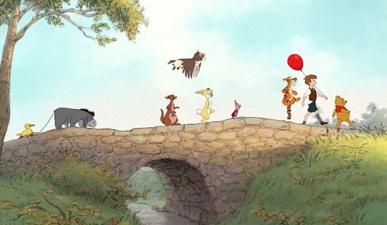
AV: How did you immerse yourself within the very spirit of the Hundred-Acre Wood?
HJ: Funnily enough, I actually deliberately didn’t do too much research, only because the original score is still iconic and also so good. The temp track for the movie itself was actually mostly from the original. That said, one of the funny details that I managed to find out was the original string line up. It was a surprisingly small section, two double basses, four celli, four violas, six violins or so. But I didn’t want to spend too much time being like a student because I felt like, past the enjoyment of Delius and Dukas, I had to find the Pooh theme. I think I just responded to the picture and spent two or three days finding that Pooh theme that had just enough melodic naivety to feel like Winnie the Pooh, just enough use of harmony so that, as the score develops, you know that you can sort of blossom into the appropriate material for the score. In brief, I think I just watched the film aware of the fact that we couldn’t depart too much from the original style and then went to the piano to find my Winnie the Pooh theme.
AV: How did you get along with Steve Anderson and Don Hall, the directors?
HJ: They were brilliant! I don’t want to make it sound like it’s surprising but there’s a level of intelligence and education that goes with animation. People might think: because something’s animated, it’s for children. But they were very insightful. They tried to engage the conversation about score almost like a book review at university. They’re very smart people and they were very aware of what they were doing in the film. Also, they were very humble as they said they didn’t know too much about music, but that’s not true. Every meaningful discussion I had with them to help the underscore support what the picture, I just remember never being confused or scratching my head. It was all like everyone was in the same trench. They really, really were great to work with. They completely understood the process of scoring and you can hear that through the use of themes like the Eeyore motif. The same with Chris Montan. It didn’t feel like some sort of executive. It felt like an artistic, musical team helping the film. All the conversations were artistic and that was a very enjoyable part of it.
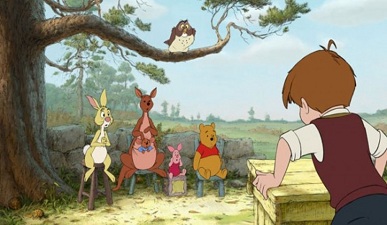
AV: Did you happen to collaborate with the songwriters, Lopez or Zooey Deschanel?
HJ: No, the songs mostly stand alone. When I first saw the movie, I think some of the songs were already in progress. They’re so self-contained and strong on their own. It wasn’t not like a movie where before anyone does anything, the themes of the score have to be reflected in the melodies of the songs… And the songs are sung by the characters in the film so, they become these pre-established beacons, they’re already in the musical landscape, so you know what you’re navigating around. You know where you’re heading to and what you’re coming away from. The songs are important moments you deliver to and come away from. So, those guys were completely self-sufficient. And the style of orchestration of the songs was close enough. Of course, there could be issues as the orchestration style of the songs is widely different from the score, so you’d have to do something about that. But that wasn’t the case here. The orchestration style of the songs was great and similar to the score. If anything, it helped.
AV: What are your favorites cues?
HJ: Most of the score is very much classic underscore. It is much unlike a Terry Malick film where you could have ten minutes of beautiful shots of Virginia, listening to a symphony whilst looking at pictures. Winnie the Pooh has people talking all the time. It’s a dialogue film, and in that respect I would say that this score is not invasive, because you have to support the conversation of the characters. However there are, quite obviously, a few set pieces where the style of the score moves away from just being supporting and comes to the foreground.
The obvious example would be the cue where Pooh and Piglet and Rabbit are making preparations to try and snare the Backson. Quite a comedic cue. It’s almost like a Great Escape-type feeling to it. The orchestra gets bigger, with percussion. The other obvious big set piece is the Tigger balloon chase. It’s pretty much action music, but in the context of Winnie the Pooh – not action music like Transformers! It means that you get to be more virtuosic with the orchestra. And it’s comedic as well, with Piglet bouncing up and down and being chased by Tigger. It’s a sort of classic Disney action-adventure sequence.
Another cue I’m proud of is the first time you see the Hundred-Acre Wood. It’s within the book. You see the trees and Pooh walking across. I’ve always had the feeling that there’s a certain tone that we need to establish in the movie, which I called: “imagine England before the motorway”! An image of a world that doesn’t exist anymore or somehow a world that never existed. A world where there wasn’t Kentucky Fried Chicken and Burger King and four layer motorways. A world where boys would go and play with their friends in the forest, make treehouses, come home for tea at six o’clock, read books… A kind of safe and almost idealistic rural paradise which probably never existed. An idea of an England somewhere in the 50s, before LSD and the sexual revolution and social deprevation… It’s reflected probably more in literature like Enyd Blyton. A world where social values were better, everyone behaved themselves, a polite world where everyone said “please” and “thank you”.
I’ll always remember when I was learning some piece of Elgar, I think a piano reduction of one of the Enigma Variations. And my teacher said it was conjuring up an image of England before the motorway. I didn’t know what he meant then, but I do know what he means now. And, to me, that opening shot on the Hundred-Acre wood sort of has that feeling. When you hear something that has a little influence of Vaughn Williams or Delius or that sort of area, it does conjure a different world, a world where there aren’t any PayPal and eBay, a more innocent world. And I think I did manage to get some of that across in that score.
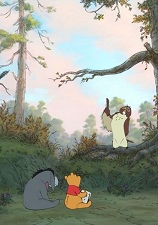
AV: Think about the fact that, as Walt Disney was imagining a whole society, his Experimental Prototype Community of Tomorrow (EPCOT), with all the complexity it implies in economical, sociological or urbanization terms, at the very same time he asked his crew to create films on Winnie the Pooh, on that plain and simple and delicate, silly old bear…
HJ: What I was impressed with the directors was: there’s a danger if you try too much to create a sort of idealized world. It has the potential to feel insincere or lacking in depth because it’s conjuring something that’s just too good to be true and could be cliché. What impressed me is, despite the fact that the world created is very similar to the original Winnie the Pooh, it still feels like a fun story, and a value for friendship that the animals share. It doesn’t seem like watching something period; it doesn’t feel like watching something so historical that you feel that it’s historical, like watching black and white footage. It mostly has to do with the innocent friendship of all the animals.
What’s so impressive is that they managed to keep that world without feeling the need to get into some kind of vacuous contemporization. But it doesn’t feel historical, it still feels like something that kids would watch and just enjoy for what it is without being persuaded to watch something old-fashioned by their parents. It’s because the story is universal. To appeal to people, it doesn’t have to exactly reflect where they live in. The values expressed in Winnie the Pooh are timeless.
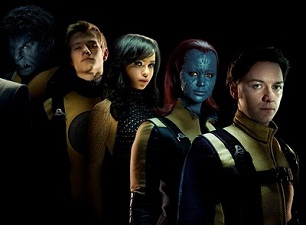
AV: Now, how would you describe your score for X-Men: First Class?
HJ: As the complete opposite of Winnie the Pooh! The two of them just couldn’t be any further apart, in a funny way. If someone heard the music for Winnie the Pooh and then the music for X-Men, I’m hoping he or she will think it can’t be the same composer. They’re so far apart in every conceivable regard, the harmony, the orchestra, everything is different. It’s much more production heavy. The speed which the harmony changes is slowed way down. It’s almost like pop music where you have fundamental positions. And instead of music developing, it’s much more cyclic. Like in pop and rock music, once you’ve established four, five or six chords, they roll around in a circle, which you never have in Winnie the Pooh – it’s constantly evolving and developing like historical concert music.
Painful as it was, there’s hardly any woodwinds in X-Men, and the orchestra is not virtuosic at all. It’s a lot of driving, minimal sort of ostinators on often quite heavy productions. It’s almost like two different parts of your personality. If I had to spend my whole life only doing scores like X-Men, I would be be constantly fantasizing about doing a score like Harry Potter or Winnie the Pooh, an orchestral score in the traditional sense of the word, pulling on the history of western, classical composers. On the other hand, if I spent all my life only doing Winnie the Pooh or other kind of animation music, I’d be always fantasizing about “when will I get to do one of these big live-action productions with electronics, guitars, being contemporary?” So, I just feel very lucky I could commit to the Winnie the Pooh style 100% and enjoy it for everything it was, and then not long after that completely forget all about that and go into a 100% different universe.
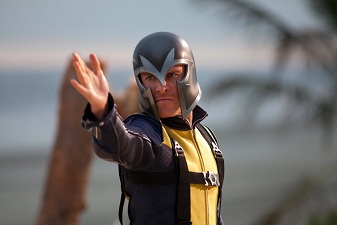
AV: Did you want to integrate some period elements in your score, since the film takes place in the 60s?
HJ: Not too much because, even though there’s a lot of what you might call non-classical elements on one hand, it also isn’t like period and it doesn’t sound like 60s music. And a lot of it has to do with the director Matthew Vaughn, who’s very specific. He loves music, he loves talking about music and playing music and getting involved with music. His kind of music isn’t necessarily the John Williams/Alan Silvestri, orchestrally driven, harmonically complex music (which I love). He’s also interested in that. If you look at his movies like Kick-Ass, you could play an amazing cue from The Empire Strikes Back. But that’s not what he wants for this movie. It’s got to be cool, it’s got to be more contemporary, braver and more simple.
Actually, just to sort of get warmed up, I started experimented on a couple of cues much more in a John Williams-y, Alan Silvestri kind of a style, with woodwinds floating all over the place, a bit more like Van Helsing, and I showed them to him and he said that was really good music but this was not the direction he wanted to go. So, we spent time finding a direction for the movie. You could still achieve all the same emotional beats but you’re just using a completely different language much more influenced but everything Winnie the Pooh isn’t influenced by. Electric guitars, electronics. Even the use of the orchestra would be the sort of orchestral hooks you’d get more in a record.
I remember him talking about John Barry, who died not long after we started working on X-Men. If you study John Barry, a lot of it is quite pop. It goes round in circle because he got such a great hook. And that’s more of a pop technique. So, when Matthew was talking about John Barry, it was about his simplicity and effectiveness in finding something that works and repeating it and building it more on a rock principle. From then on, I made sure to get a really cool palette of non-orchestral sounds. Because once you get into that kind of a score, not everything can be played by the orchestra.
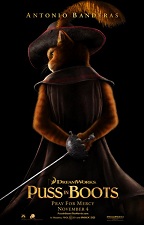
AV: And how is Puss in Boots going?
HJ: It’s much more back to Winnie the Pooh. Not with the same harmonic language because of course it has a very strong Spanish flavor. We’ll see how the score goes, but as I see it now, my palette has to be orchestra, guitars, Latin percussion. At the moment, I’m thinking everything is very acoustic, very much natural because that’s how the movie is. A bit like Winnie the Pooh, the movie does not have unnecessary and vacuous sorts of contemporary gestures in it. It has a very strong soul to it, and that soul is impeded in through Latin culture. At the moment, I’m banning myself from synth.
On the one hand, I’m going to try and pull away from the obvious Spanish tradition with simple guitars, and some of those Ennio Morricone gestures like the bell, the whistling that we know from The Good, the Bad and the Ugly, but on the other hand, I’d really like to pull from Ravel and Manuel de Falla and Debussy. Because there’s an area of Spanish influence in concert music. You can’t have a score that’s just all guitars. It has to be big, it has to be symphonic. So, I’m imagining a world that combines the folk instruments that come from traditional Latin music, mixing that with some of the more ambitious, orchestral colors you get in Ravel, and Debussy and De Falla; those composers that allowed Spanish music to come into concert music. The movie is fantastic!
With thanks to Henry Jackman, Jeff Sanderson at Chasen, Jack Dolman and Alex Belcher




